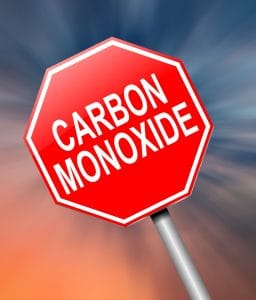 During the fall and winter seasons, people turn to their heating products to help keep the warmth in their homes. However, the increased use of these types of products strengthens the chances of exposure to a fire or carbon monoxide hazard. If heating products are used improperly or left unattended, residents can experience a catastrophic home fire or carbon monoxide poisoning.
During the fall and winter seasons, people turn to their heating products to help keep the warmth in their homes. However, the increased use of these types of products strengthens the chances of exposure to a fire or carbon monoxide hazard. If heating products are used improperly or left unattended, residents can experience a catastrophic home fire or carbon monoxide poisoning.
The U.S. Consumer Product Safety Commission (CPSC) is doing its due diligence to warn consumers of potential fire and carbon monoxide hazards associated with particular products. For example, the CPSC reports that portable heaters are the catalyst for 1,700 fires and 80 fatalities each year. The organization also warns consumers of potential overheating hazards that can result from leaving a space heater running unattended.
Another type of product used during the colder months that presents a carbon monoxide hazard is a portable generator. According to the CPSC, there have been more than 700 deaths resulting from carbon monoxide poisoning from portable generators between 2010 and 2020. The CPSC advises consumers to remain aware of heating product recalls year round.
What is carbon monoxide?
Carbon monoxide is a colorless, odorless gas that is released when fuels like coal, gasoline, and propane do not burn completely. What makes carbon monoxide dangerous is the fact that it is a silent killer; it can be discovered in any product that burns fuel. Cars, stoves, engines, grills, fireplaces, and furnaces can release enormous amounts of carbon monoxide without residents being aware. When carbon monoxide builds up indoors, people and even animals are at risk of suffering from carbon monoxide poisoning.
What are the symptoms of carbon monoxide (CO) poisoning?
The symptoms of carbon monoxide poisoning are like symptoms of the flu. According to the Mayo Clinic, the most common are dizziness, upset stomach, chest pain, headaches, weakness, and vomiting. It can also cause blurred vision, confusion, and a loss of consciousness.
Who is most at risk of suffering from carbon monoxide poisoning?
Some groups of people are more vulnerable to the effects of carbon monoxide. The elderly and young children are especially at risk, as are unborn children. The Mayo Clinic says that “Fetal blood cells take up carbon monoxide more readily than adult blood cells do. This makes unborn babies more susceptible to harm from carbon monoxide poisoning.” People who suffer from conditions like anemia and chronic heart disease are also at risk.
What leads to carbon monoxide poisoning?
The most common cause of CO poisoning is improper ventilation. Though space heaters and other fuel-based household products are the primary culprits, they are not the only ones. According to the Centers for Disease Control and Prevention (CDC), there are more that 400 Americans who die from unintentional carbon monoxide poisoning that is not associated with fires. A car running in the garage – or one with a tailpipe blocked by a snowbank – can lead to carbon monoxide buildup, as can certain chemicals found in paints and varnishes.
How can you avoid carbon monoxide poisoning in your home?
You should install a carbon monoxide detector. Install the detector in a location where the alarm will notify the residents immediately, such as the bedroom. The Environmental Protection Agency recommends putting the detector about five feet above the floor or on the ceiling, and away from any flame-producing appliances or fireplaces. You will want to ensure that any coal, gas, oil, or water heater appliances are maintained by an expert technician annually. Make sure that any gas appliances are properly vented, and any fireplaces or chimneys are clean and free of any debris.
When it comes to vehicles, drivers want to make sure that the vehicle’s exhaust system is inspected annually. If there is a small leak discovered in the exhaust system, carbon monoxide can build up quickly inside the vehicle. Homeowners also want to avoid starting their vehicle inside a garage that is attached to a home, even when the garage door is open. You should make sure to open a door to a detached garage and allow air to seep through the garage while running the vehicle inside.
Fire hazards from heating products
According to the National Fire Protection Association (NFPA), heating is the second leading cause of home fires in the United States. For every seven home fires, one involves a type of heating product; half of the home fires created by heating products occur during December, January, and February. The heating product that is commonly associated with home heating equipment fires is the space heater.
Space heaters are more likely to cause home fires when they are left unattended or within close range of a flammable object. Any heating product that is less than three feet around anyone or any other flammable object is at risk of burning a person or setting the flammable object and the rest of the house on fire.
How can you safely use a space heater?
To reduce the chances of a home fire, you should place a space heater on a hard and level surface that is free from any flammable objects. You should also keep space heaters at least three feet away from any animal, person, or flammable object. If you have young children or pets, maintaining a distance of three feet will prevent children or pets from knocking the space heater over or placing any object like clothing on the space heater. Be sure to turn the space heater off when it is not in use or when a person is not present in the room. This prevents overheating, and reduces the possibility of an object being set on fire.
When you have been hurt by a defective or dangerous product of any kind, you want a lawyer you know you can trust to help you look after yourself, your family, and your future. At Delius & McKenzie, PLLC, you’ll find a team of experienced attorneys and support staff who can answer your questions and help you through this trying time. Please call 865-428-8780, or submit our contact form to make an appointment with a Sevierville product liability attorney about your needs. We are proud to serve clients in Sevierville, Seymour, Gatlinburg, and Pigeon Forge.

Attorney Bryan E. Delius was born and raised in Sevier County, TN. He founded Delius & McKenzie more than 20 years ago, after receiving his JD from the University of Tennessee at Knoxville. He is admitted in Tennessee and in several federal court systems. Learn more about Bryan E. Delius.




